“Making the past a strength. An influence. Demanding precision, subtlety. Imagining the finest of wines, generous, ambitious. The continuation of our story. A story of a name, a winery rooted at the heart of Hermitage.” – Ferraton Père & Fils
I’ve been fortunate to drink several of the “everyday” wines from the Ferraton Père & Fils portfolio in the last couple of years or so. Not only are they quality wines that exemplify the best of the Rhône’s terroir, but they are ridiculously affordable. I mean these Ferraton wines seriously over-perform for their price points. I’ve had them with family, shared them with friends, and all have enjoyed the experience of drinking these wines. Not to mention that I’ve seriously swooned over their Rosé.
Ferraton was founded in 1946 and believe it or not, some of their original vines are still producing fruit today! As a grower-négociant, they are a highly respected producer in France’s Rhône Valley. Twenty percent of their production is estate wines. All are biodynamic and, since 2015, Demeter-certified, with fruit coming from the domaine’s 37 acres of prime vineyards in the northern Rhône’s Hermitage, Crozes-Hermitage and St. Joseph appellations.

Their négociant range, sourced entirely from sustainably farmed fruit, includes bottlings from the Northern Rhône’s Côte Rôtie, Condrieu, St.-Joseph and Cornas appellations, plus Châteauneuf-du-Pape, Côtes du Rhône-Villages Plan de Dieu, and Côtes du Rhône in the Southern Rhône. Today, Ferraton is run by Michel Chapoutier.
Rhône Valley Primer
So speaking of appellations…
The Rhône Valley is definitely on my short list of places I’d like to visit. Geographically divided into the Northern Rhône and Southern Rhône sub-regions, I’ve long been a fan of the wines of the south. In the last couple of years, I’ve (apparently) finally drank the right ones and now very much enjoy the wines of the Northern Rhône.
The north and the south sub-regions are quite different. The Northern Rhône is quite small and a fraction of the size of the Southern Rhône. In fact, 95% of production in the Rhône Valley comes from the Southern Rhône. Additionally, both regions have different climates, terroir, and grapes.
In the Northern Rhône, for red wines, its all about Syrah. This is the only grape permitted so if you have a Northern Rhône red, you know its Syrah. For white wines, the three permitted grapes are Viognier, Marsanne, and Roussanne. Despite allowing three different whites to only one red, 95% of production in the Northern Rhône is red. The eight appellations that make up the Northern Rhône are:
- Côte-Rôtie
- Condrieu
- Château-Grillet
- Saint-Joseph
- Crozes-Hermitage
- Hermitage
- Cornas
- Saint-Péray
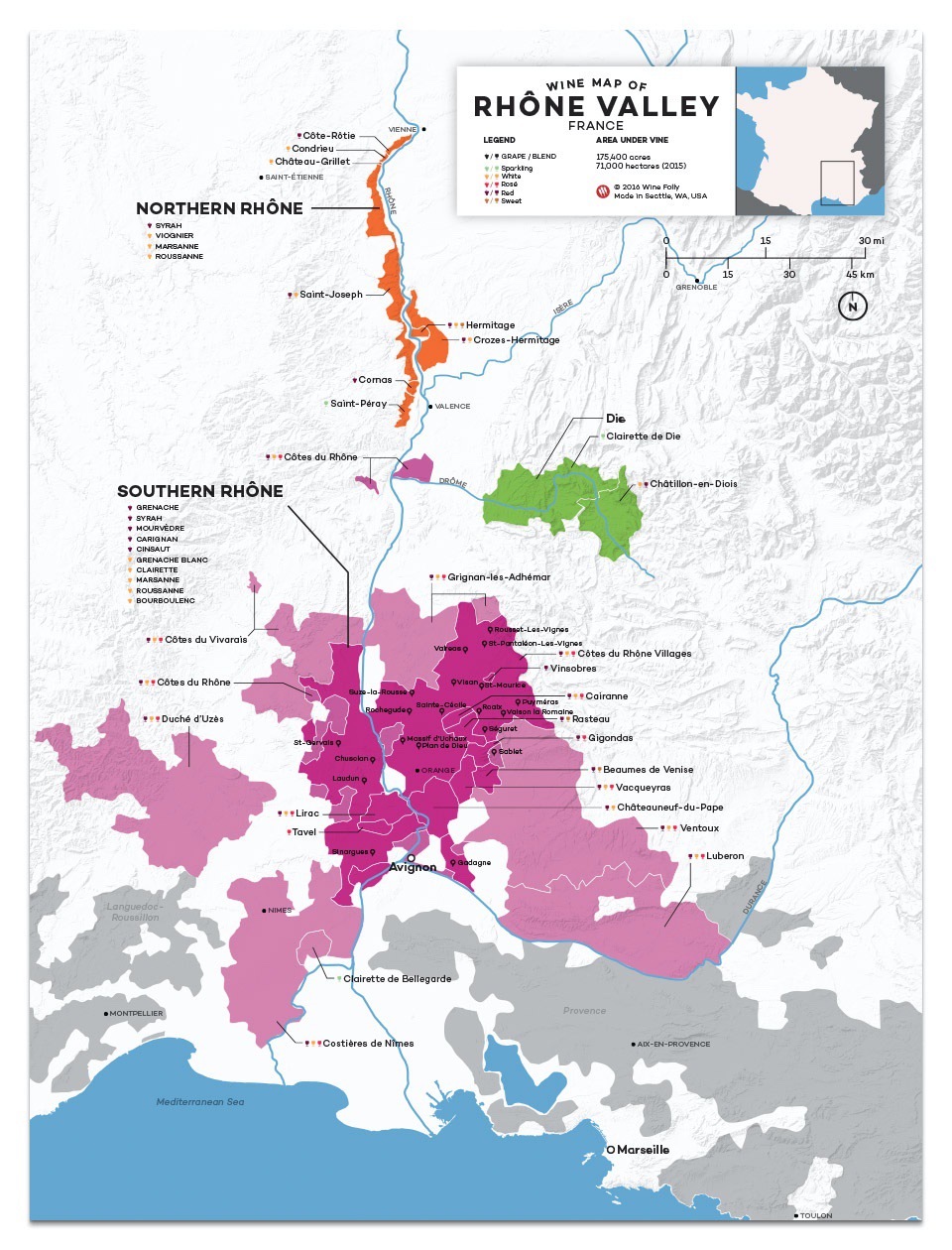
The Southern Rhône is a different story altogether. With a warmer, Mediterranean climate, a multitude of grapes is permitted. Grenache reigns supreme in the south, but the supporting cast may consist of Mourvedre, Cinsault, Counoise, Carignan, Grenache Blanc, Marsanne, Roussanne, Clairette, Bourboulenc amongst others.
The appellations that make up the Southern Rhône are:
- Côtes du Rhône
- Châteauneuf-du-Pape
- Vacqueyras
- Rasteau
- Cairanne
- Gigondas
- Vinsobres
- Lirac
- Beaumes de Venise
- Muscat de Beaumes de Venise
- Tavel
The nearby satellite appellations1 have many similar characteristics of the Southern Rhône.
Ferraton Wines
Ferraton wines run the gamut, from north to south, from red to white – from the rare, under-200-case wines made from 60-year-old Syrah vines to appellation level wines that are crowd favorites. In keeping with the Rhône tradition of blending, Ferraton sources grapes from various vineyards for its regional-level appellation wines. But at the higher levels of their range, they have adopted a small-parcel philosophy, presenting wines that are not only single-vineyard, but from specific blocks within a vineyard. Whatever their origin, a signature characteristic throughout the Ferraton line is freshness and juiciness, even in their higher end offerings.
On this most recent occasion, I was able to try three new wines that were sent to me to sample.
2017 Côtes du Rhône Samorëns Blanc ($16)
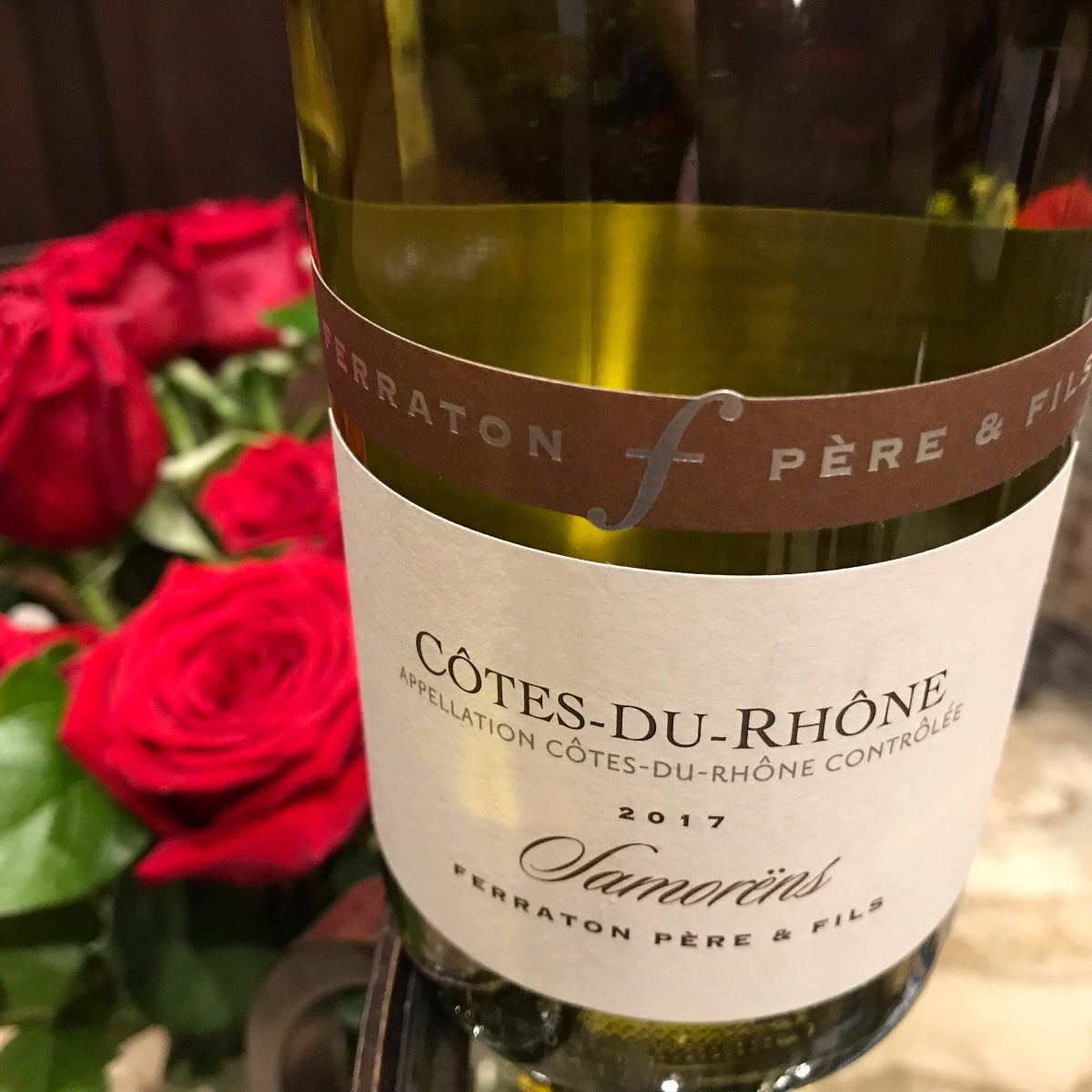
Almost of unicorn status, its always nice to be able to drink and appreciate white wines from the red wine dominated Rhône. Crafted of 35% Roussanne, 30% Viognier, 25% Grenache Blanc, 5% Clairette, 5% Marsannne it has aromas of white peach, pineapple, and sweet flowers. The palate sings with salinity tangy acidity, and fresh, vibrant citrus. We paired with roasted chicken and later, the front porch – both equally excellent pairing partners.
2017 Côtes du Rhône Villages Plan de Dieu ($18)
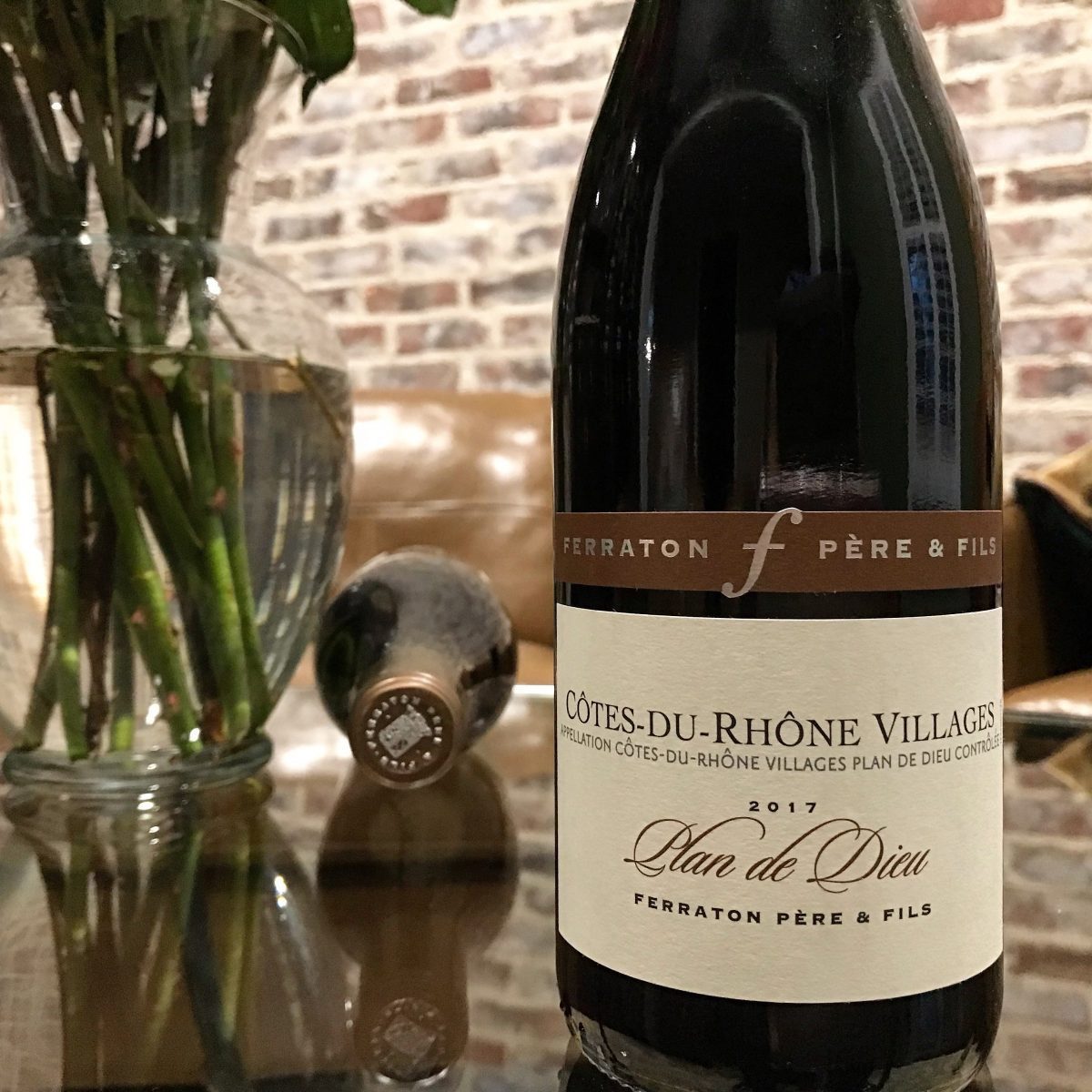
“Plan de Dieu” translates to “God’s Plan”2 And what a great plan this one was. Crafted of 65 % Grenache, 25% Syrah, and 10% Mourvèdre, the nose just draws you in. All those spice, oak, vanilla, and black plum aromas up the expectation level and leaves you eager to finaly take a sip. Fleshy black plum, blackberry, black licorice – “all black everything” in my Jay-Z voice – just coats the palate. Rounded out by toasty vanilla, a firm structure and smooth tannins. Goes down quite easy.
2015 Ferraton Père & Fils Saint-Joseph “La Source” ($32)
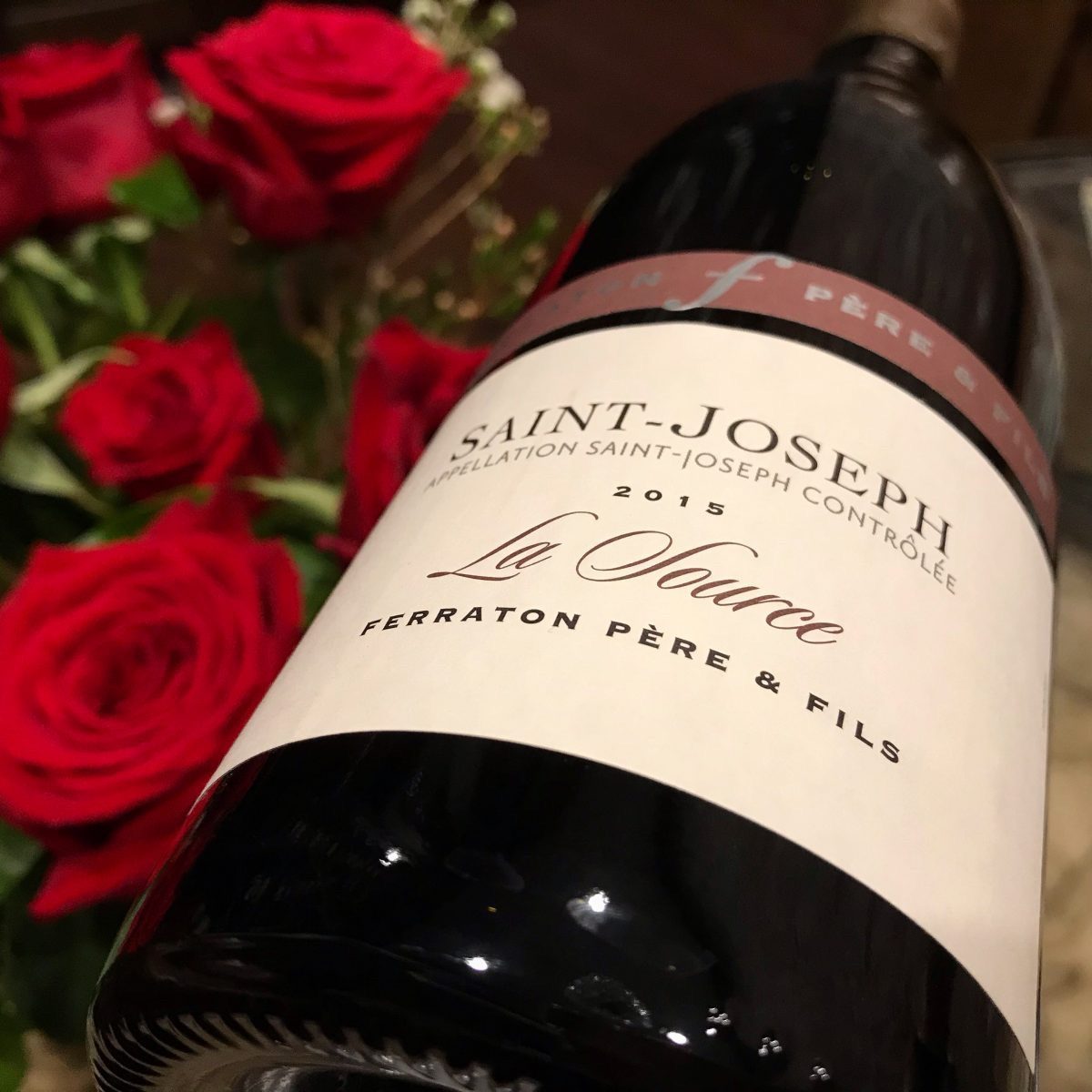
Crafted of 100% Syrah and from the stellar 2015 vintage, I was surprised by how approachable this one was. Particularly given previous Northern Rhône wines I’ve had that needed a good deal of cellar time to mellow out. Well, I’m not getting any younger so kudos to Ferraton for the earlier drinking vino! Savory, fruity, with ever present minerality makes this one a classic Northern Rhône wine. While Côte-Rôtie, Hermitage and Cornas are considered the gold standard for the Northern Rhône, the wines often come at prices that hurt my feelings. The wines of St. Joseph can play in their arena but in a low-key way. In other words, the wines have many of the same characteristics but in easy-going manner that needs less cellar time. And at $32, the price doesn’t hurt my wallet.
- Côtes de Ventoux, Côtes du Luberon, Tricastin/ Grignan-les-Adhémar, Côtes du Vivarais, and Costières de Nimes
- It is also the name of a Côtes-du-Rhône village (one of 18) that has boasted AOC status for its red wines since 2005 and sits just east of the more famous Gigondas and Vacqueyras appellations.

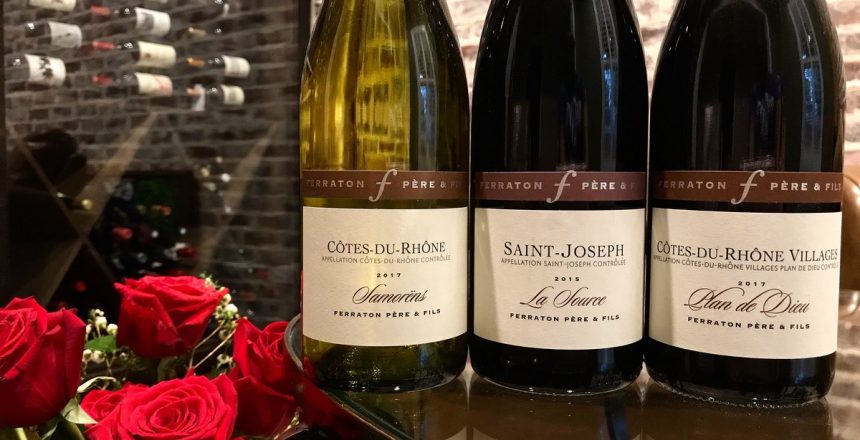


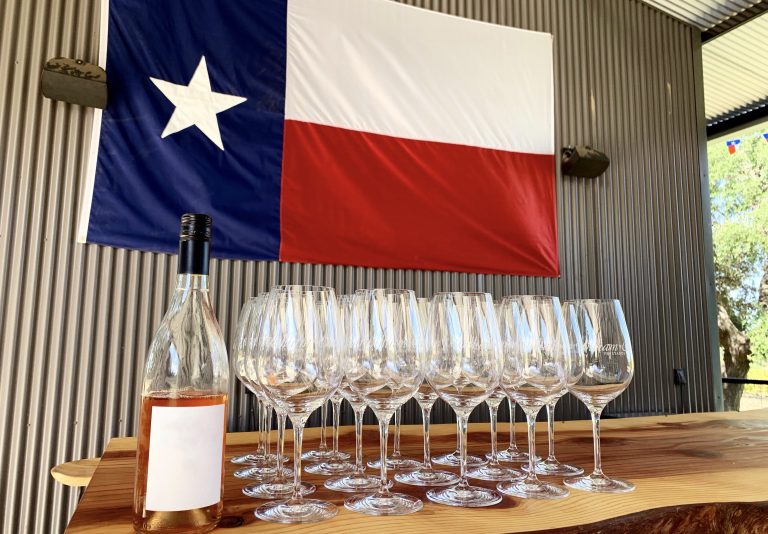

2 Comments
Lori
•5 years ago
definitely on my short list to visit also!
Kat
•5 years ago
So many places, so little time!